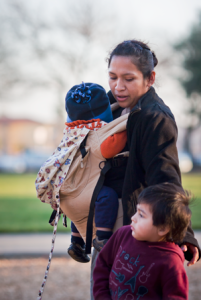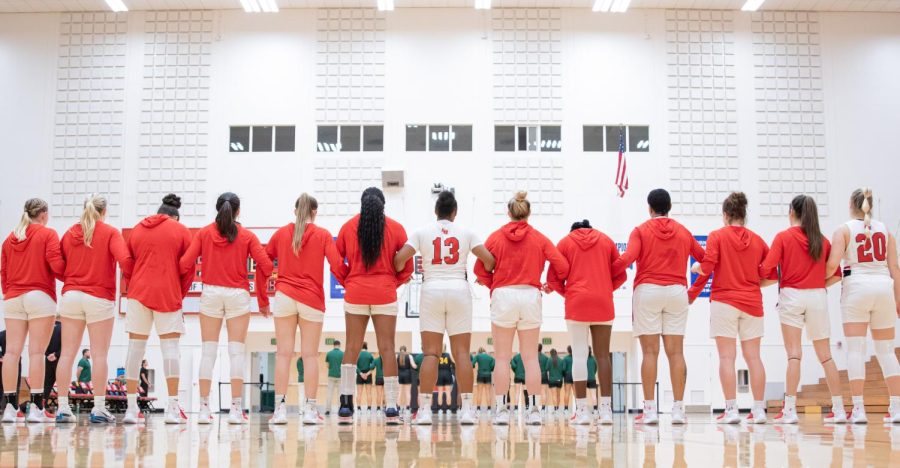
economic times in U.S. history.
Hispanics now make up the largest group of children living in poverty in the United States, the first time in the country’s history non-Hispanic whites have been outnumbered.
According to a report by the Pew Hispanic Center, 6.1 million Hispanic children currently live in poverty in comparison with five million non-Hispanic white children and 4.4 million black children, Hispanics, who analysts largely agree have been hit hardest economically in the years since the 2007 recession, have already one of the highest unemployment rates and have lost more homes to foreclosure than any other demographic.
The nation’s 50.5 million Hispanic are now further stressed to know their children go hungry more than any other group in the United States.
In the city of Hayward, the likeness of poverty mirrors the rest of the nation, where in a city of 144,186, according to U.S. Census data, 58,730 or roughly 40.7 percent of the total population is of Hispanic descent, a 22.7 percent increase since 2000.
According to the Hayward Unified School District (HUSD), roughly 57 percent of the 20,452 children ages 0-19 enrolled are of Hispanic descent.
In terms of hunger issues, according to Robin Jones, Manager of Operations and Marketing for HUSD principally in charge of the free and reduced lunch programs, a staggering 14,784 students receive free or reduced lunches, although it is not possible to account for which families enrolled in the program are of Hispanic or not.
Therefore, 63 percent of kids live in households which the U.S. Census Bureau defines as a household income of $22,113 or less for a family of four.
According to Jones, the issue of hunger transcends races, nationwide and in the city of Hayward, resonating with Census data that one in five children across all races live in poverty.
“I came to the United States because life was harder in my pueblo in Mexico. With the struggle I lived to get here so my children can live here, I still can’t always have enough for them to eat good,” said Ofelia Vasquez, who sells homemade tamales and flower arrangements with her two daughters on Hesperian Boulevard.
“We work so hard, so hard, my children still go to sleep without feeling full. As a mother I hurt inside, I work as hard, hard like lot of people. I work so hard,” said Vasquez.
Vasquez, who says she was laid off from her full time job at an Oakland factory in 2008, and now works as a babysitter and housecleaner, sells her cooking and crafts and crafts on the side, and says her husband has found little luck in construction, as most Americans. Thus, adequately feeding their five children has been a burden.
“My son, he is so smart, so smart, he likes the planets and the sciences, he says he wants to go to the space,” said Vasquez with swelling eyes and a tight grip on her daughter’s hand. “I pray to God he can do it even though I have not many of ways to help.”
Vasquez says she relies on the HUSD’s free and reduced lunch program, where her three school-aged children can get breakfast and lunch reduced, saying she feels lucky to have that opportunity available to them while she and her family are trying to resuscitate their economic status.
According to Hayward City councilmember Mark Salinas, the average income in Hayward is around $50,000 a year. This new data, along with prevalent issues affecting the state of California, issues of hunger offer a different picture of what people are used to seeing for poverty.
“Make no mistake, we have lot of immigrants in our city who live so below poverty level that their resiliency to survive especially in this economy is incredible,” said Salinas. “But when we think about poverty in our city, poverty isn’t only an immigrant issue, it’s also a working class Latino family issue. The image were seeing now is not always immigrant or undocumented, but families that have been here for generations.”
Luz Calvo, Associate Professor of Ethnic Studies at CSU East Bay, cites this as “a moral issue,” one that members of the Hispanic community need to not only be aware of, but work for political action and change.
“I see this as a race issue. The only way this situation […] is going to be resolved is when people of color band together in a social movement that demands equality, quality education and a fair distribution of wealth,” said Calvo.
For Hayward City councilmember Francisco Zermeño, the issue of children poverty — regardless of which ethnic demographic is highest presently — is an issue in dire need of more attention.
He cites the recent Promise Neighboorhoods grant, a federally funded 25-million dollar partnership with Chabot College and CSU East Bay which works in the Jackson Triangle in Hayward to ensure children are well fed and consequently prepared for learning, as one of the many programs working towards minimizing hunger issues among children in Hayward.
Miranda Everitt, Communications Coordinator for the Alameda County Community Food Bank cites child hunger as “unacceptable,” and that 43 percent of the people they serve are under 18.
Everitt says many outreach programs and groups such as La Familia, South Hayward Parish, Hayward Spanish SDA, Salvation Army, La Familia Resource Center and programs through the Alameda County Community Food Bank are contributors to decreasing the number of children living in Hayward who do not have access to proper nutrition.
For many activists and influential members of the Hispanic community in Hayward, like Salinas, Calvo and Zermeño, a change in this issue begins with activism in thought and in action to ensure that hunger is a conquered battle in the city of Hayward and elsewhere.
“The priorities at the moment are not our children. Our kids are dieing, this is simply not right,” said Zermeño. “When our kids don’t eat they’re not going to learn anything. We might have a lost generations of sorts if these kids don’t learn anything, it might result in higher numbers of children leaving the educational system, then they’ll drop out, it’s not logical for us not to do anything.”
Vasquez says although she is embarrassed to ask for help, she feels her children’s well-being is more important than her pride, and thus says until she can find another steady job and her husband finds more work, she will do whatever she can to facilitate survival.
“My children don’t know they’re poor, but they know things are so hard at home. I don’t want them to feel like they are below than the other people,” said Vasquez.
“We have less to eat and spend money but we are humans, same as everyone in this world. We all want same things, but right now people like me live harder. But, sometimes I say, that’s OK, it will get better.”











